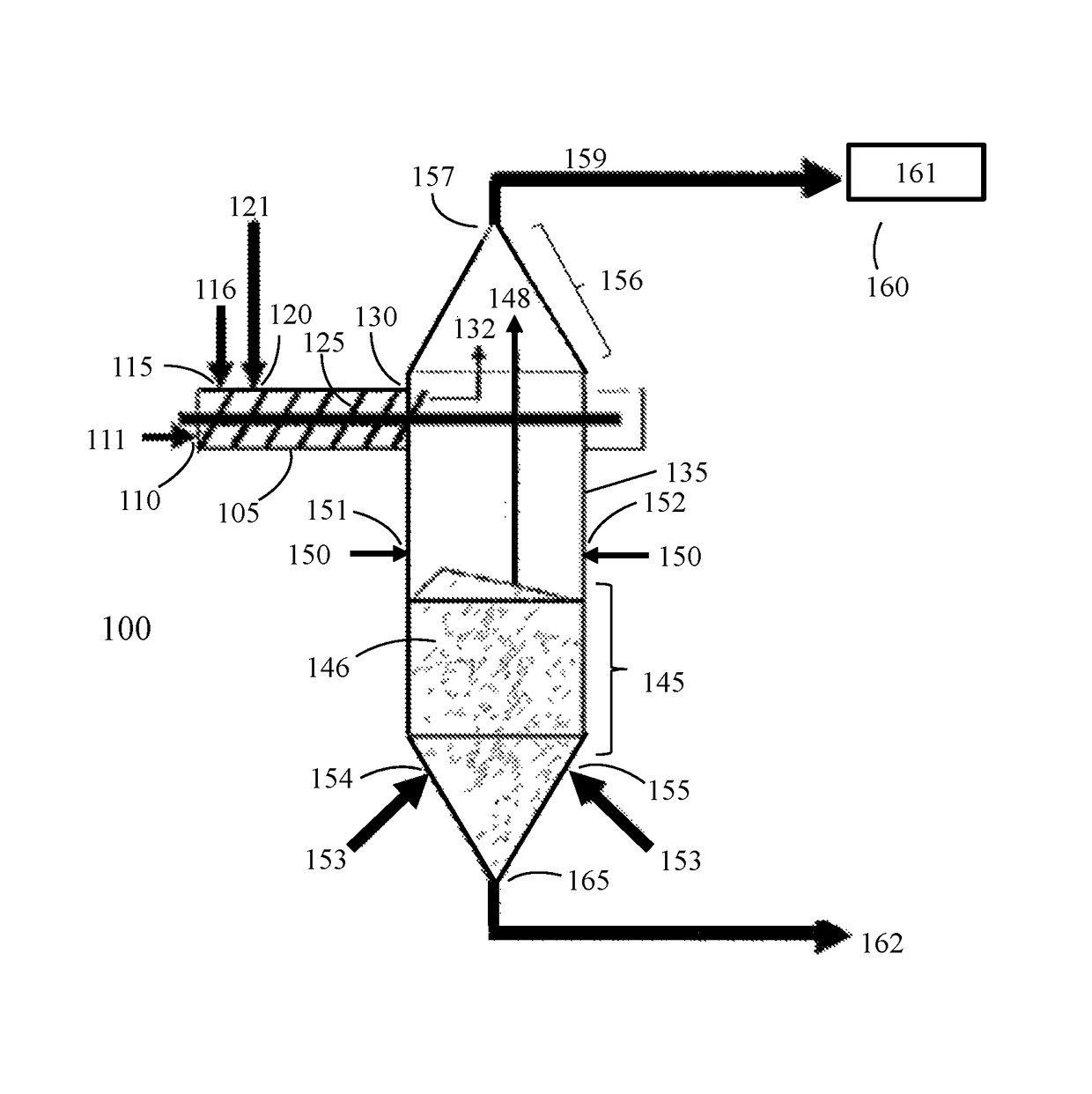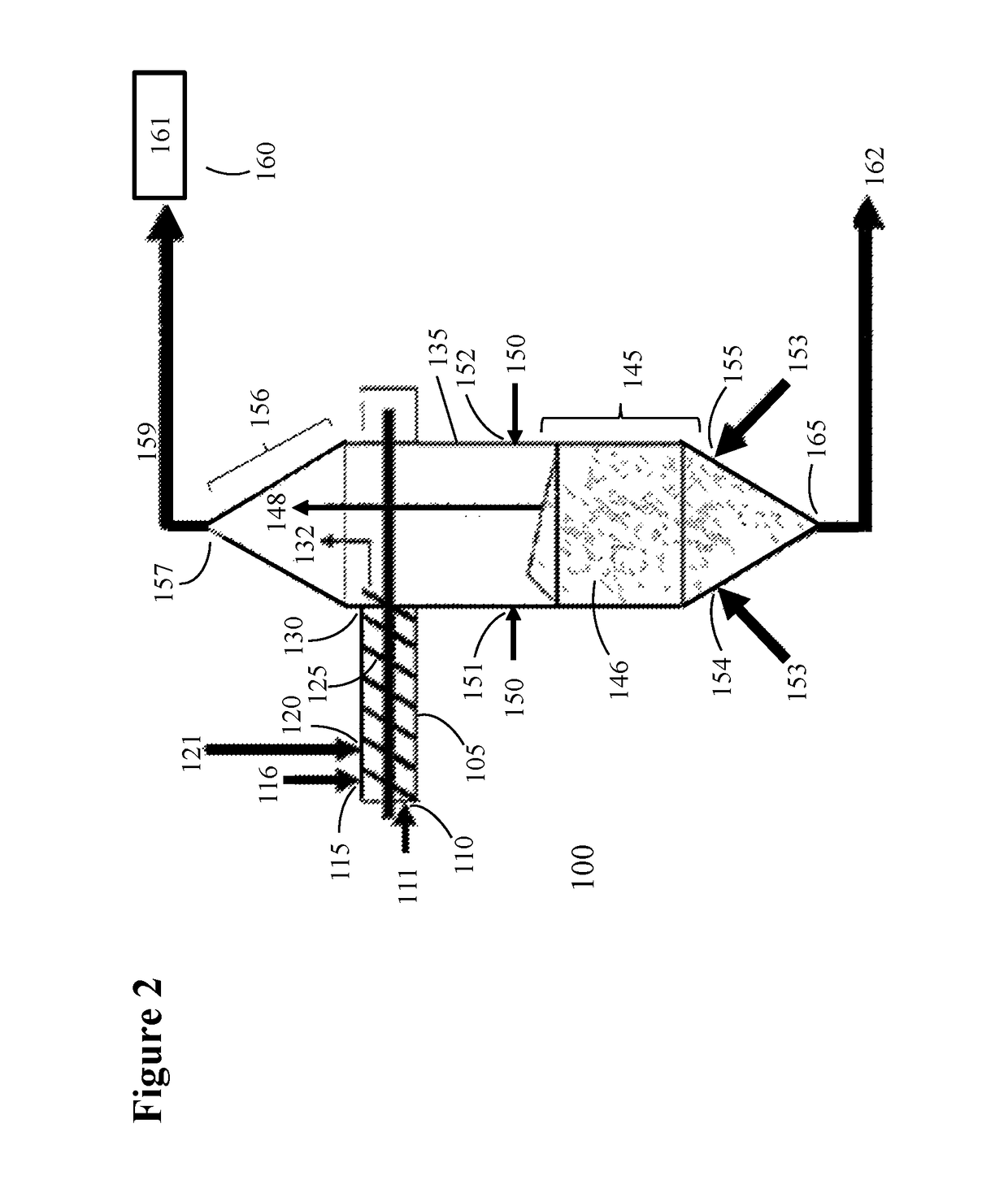Systems for two-stage biomass pyrolysis
a biomass pyrolysis and biomass technology, applied in biofuels, products, chemistry apparatuses and processes, etc., can solve the problems of lowering efficiency and yield below commercially-viable levels, neither of these options is conducive to the design of a large, commercial-scale pyrolysis system, and lack of residence time. achieve the effect of facilitating transportation
- Summary
- Abstract
- Description
- Claims
- Application Information
AI Technical Summary
Benefits of technology
Problems solved by technology
Method used
Image
Examples
Embodiment Construction
[0029]The inventive processes disclosed below partly relate to processes and systems for pyrolyzing a lignocellulosic biomass feedstock in a pyrolysis reactor comprising two reactor stages. The inventive processes and systems provide multiple pyrolysis residence times for more efficient pyrolysis of the different molecular components within a lignocellulosic feedstock. In certain embodiments, each reactor stage conducts pyrolysis at a different temperature to further maximize the efficiency of cellulosic biomass conversion into products that are suitable for use as a liquid hydrocarbon transportation fuel, fuel component, or mixtures thereof.
[0030]Examples of biomass feedstock used in the present invention include, but are not limited to lignocellulosic biomass, which is available from a variety of sources including forest residues, dead trees, branches, leaves, tree stumps, yard clippings, wood chips, wood fiber, sugar beets, miscanthus, switchgrass, hemp, corn, corn fiber, poplar,...
PUM
| Property | Measurement | Unit |
|---|---|---|
| temperature | aaaaa | aaaaa |
| temperature | aaaaa | aaaaa |
| residence time | aaaaa | aaaaa |
Abstract
Description
Claims
Application Information
 Login to View More
Login to View More - R&D
- Intellectual Property
- Life Sciences
- Materials
- Tech Scout
- Unparalleled Data Quality
- Higher Quality Content
- 60% Fewer Hallucinations
Browse by: Latest US Patents, China's latest patents, Technical Efficacy Thesaurus, Application Domain, Technology Topic, Popular Technical Reports.
© 2025 PatSnap. All rights reserved.Legal|Privacy policy|Modern Slavery Act Transparency Statement|Sitemap|About US| Contact US: help@patsnap.com



